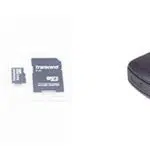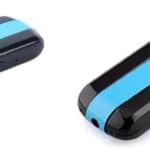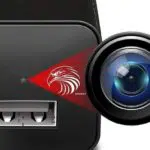A parabolic microphone is a well-designed system to pick up sound. They are used in multiple fields. These include sports, news, and entertainment. It takes various theories of physics and geometry to make a parabolic microphone. In this article, we will show you how to make a parabolic microphone. We will use simple products that are available at any store. We will also show you a method where you can make use of old unused materials for your microphone.
Table of Contents
How To Make a Parabolic Microphone?
We are going to show you two ways of making a parabolic microphone. They involve the same steps, but with different materials. This will cater to everyone’s needs.
Method 1: Using Original Metals
Step 1: Making the dish
This is the primary requirement for the microphone. A good dish has to meet specific requirements. For example, it needs to be firm and thick. For parabolic microphones, you cannot use any random material as the dish. The dish has to be made out of either plastic, high-quality metal, or acrylic. Keep in mind not to use weighty materials. The dish has to be mobile. Using heavy material will hamper its portability.
Once you have finalized a suitable material, we move on to the shape and structure. A dish needs to look like a television satellite. It needs to have a smooth curve. Moving on to the size of the dish. Now you might think that having a smaller plate is better for portability. Sadly, you will have to discard that thought. The bigger the dish, the better. This is still debatable. Scientifically, large dishes might produce low-quality sound. But to be on a safe side, let’s go for a moderately sized dish.
Step 2: The Stem
You need a stem or support to hold the dish. Think of this as the backbone of your parabolic motor. Ideally, you should suspend the license from the center. But sometimes, making a hole in the dish might go wrong. It causes errors in further steps. The other alternative is to use superglue.
A very very strong glue. This support will also hold the mic. The material you use for the dish should not be too thin or too thick. Thin material is less likely to clog the sound waves. Just like the dish, you will have to take the middle ground here. Use the wire from an old iron hanger. Just keep the length in mind.
Step 3: Attaching the mic
The most crucial step is the attachment of the microphone. This is the soul of your device. There might be a few scientific terms here onwards, but we will try to simplify it. The mic has to be attached to the focal point of the dish. The focal point is called the parabolic focus. This is right in the center of your dish. If you know the circumference of your dish, you can quickly do the math. This is important because using the wrong point to attach the mic will ruin all your progress. There are a few ways you can safely attach the mic:
a. Keep the mic on the dish. No accuracy is needed, for now; just place it on the dish. Put on the headphones that are connected to the mic. Once you start hearing disturbances, you have to move the dish. Move the dish towards the source of the sound. This might take a few tries. Once you find your audio source, stroke the microphone on the stem.
Just like a soundcheck before a concert. Run it up and down a few times. Check for the point where you get the loudest noise. Make sure there is no external noise. This might manipulate the sound. The most piercing sound point is the focus of the dish.
b. The other method yields more science. You can make use of a laser. A simple laser pointer will work. Point this laser towards the parabolic dish. Now you have to be alert. The laser will reflect off the stem. The point where the laser reflects is the focal point.
Once you navigate the focal point, you can attach the microphone. The microphone needs to be face to face with the dish shaft. The reflections will fall on the dish and reflect on the microphone. This is what we want. You can test this once you have attached the microphone. Put on the connected headphones and try listening to the sound. Initially, this might be difficult. You might have to keep repositioning to get the best results. Formation and attachment of these things are the most important. Clip-on microphones are the best to use for such a project. It is easily available too.
Method 2: DIY Parabolic Microphone With Old Products
You are going to be amazed at how to make a parabolic dish with elementary materials. The previous steps were just to assert the importance of assembling.
Step 1: Preparing the materials
If you find it difficult or expensive to buy a professional dish, we have an alternative. We are also catering to an audience who might not be able to afford the original required materials. If you can, then go ahead and purchase a metal or acrylic dish.
Follow the same steps, regardless of the material. We will list down both, the original as well as the DIY materials in the next section. As an example, we are going to use an old (but not torn) umbrella. You can also paint the umbrella (if you want).
Step 2: Assembling the Parabolic part
First, you need to make the umbrella look like a dish. This might sound difficult, given the difference in material. Use scissors or cutters to chop off the plastic holders of the umbrella. You have to do this in order to let go of excess material.
Step 3: Attaching the stem
If you recall, this is a critical part. If the item is not at the center, it will bog down your whole device. However, the good part about using an umbrella is that you know exactly where the center is. It is even directly marked and ready for you! The only task is to make a clean cut without damaging the dish. You have to cut out the knob at the head of the umbrella. This has to be a clean and precise cut.
Therefore, try using a combination of scissors, blades, and razors for the job. Your hole should be adequate enough to hold the microphone stem. If it is too loose, the mic might fall off. If the gap is too small, the microphone will be unable to effectively catch the frequencies. The dish is almost ready.
Step 4: Final Attachments
Now, you might need something from the store. You need a high-quality tape to bind everything together. Therefore, we use gaffer’s tape. Focus on this step very carefully. Now, you have to cut a small portion of the tape. It should be enough to cover the knob where we made a cut. You need to make a few cuts on the tape. These cuts should go through the umbrella too. Make the cuts big or small enough for the mic to pass. Not the microphone, per se, but the wire attached to the microphone will go through this.
Step 5: Preparing the handle
Now, since we want a nice and portable parabolic mic, the handle should not be too big. You can use any small wire for the handle. As an example, we are going to use a paint roller. In our previous example, we used a coat hanger. If you are using a paint roller, you have to remove and attach a few things. Use a pair of pliers and cut off the extra part.
Once you have a thin and sturdy handle, you can attach it to your dish. This might be tricky if you are using the hole. We suggest you simply use super glue. If you are inserting it directly onto the dish, make sure there are no open ends. There can’t be any air passing through the shaft. We will elaborate on how to attach the handle into the umbrella in the next step.
Step 6: Attaching the handle
Once your handle is ready, you can now attach it. If you are using superglue, skip this step. However, keep in mind that super glue works best only if you are using original items. Now you have to insert the paint roller-handle into the umbrella dish. This goes in through the top-knob opening. The paint-roller handle cannot be too short. It has to be at least five inches to six inches. Besides this, you need to leave about two inches as a buffer space. We will tell you what this is for later.
After you have inserted the handle, you need to secure it in its place. Take help from someone to hold the handle while you tape it. Use the same gaffer’s tape to position the handle. Although you can use any tape now, using the same one will give uniformity. You will have to use another binding agent to secure the handle. Either use a cable or a rope to do this. Hold the handle and move the whole dish around to see if it slips.
Do not do this very fast. Move it around like you usually would. If the handle is slipping, you have to redo this step. Just to be triple-safe, we will also put a piece of tape on the inside of the dish. Now there is no way your handle and dish will detach. Do another mobility check. If everything is in place, your parabolic dish is done.
Step 7: Installing the mic
This is the easiest part of the whole design. Don’t use any complicated microphone. There are already too many attachments on the dish. Adding anything else will increase the load. Therefore, use a clip-on mic. These are easily available in the market. Since it is a clip-on type mic, all you need to do is clip it to the dish. The wire of the mic will pass through the hole we made at the top of the umbrella.
Let’s just call it a dish from here on. This hole is called the reinforcement hole. Do everything you can to keep the wire in its place. However, avoid glue here. It gets messy, and you might damage the wire. Just like the previous parabolic mic, even here, the mic has to face the dish. This is so that the mic can pick up sound waves that reflect off the shaft. You want to catch the reflected sound and not the original sound source. It is best if you clip the mic at the focal point.
Use the steps above to find and mark the focus of the dish. This might be different for an umbrella makeshift dish. Since we are not using metal, the focal point will not be as clear and accurate. Here are a few ways you can identify the focus of the umbrella dish.
a. You can use the laser method we used previously. Shoot a laser beam onto the dish. The point where it bounces from the shaft is the focal point. Ask someone to mark this. Keep shooting a laser onto the shaft. You will get multiple focal points. The fact that appeared the most is your final point.
b. Once again, you can use the previous step. Keep the mic on the dish. No accuracy is needed for now; just place it on the dish. Put on the headphones that are connected to the mic. Once you start hearing disturbances, you have to move the dish. Move the dish towards the source of the sound. This might take a few tries once you find your audio source, stroke the microphone on the stem.
Just like a soundcheck before a concert. Run it up and down a few times. Check for the point where you get the loudest noise. Make sure there is no external noise. This will take more time than it did for the previous shaft. Remember that you are working with makeshift materials. Therefore you cannot compromise on accuracy.
c. The last way to identify the focus is simply to use measurements. We usually avoid this because not everyone loves math and numbers. If you are opting for this step, follow this carefully. Keep the microphone at three or four inches from the knob. This has to be kept inside the dish, not on the exterior. That’s it. That is your focal point.
Step 8: Final attachments
Once you have made it through the focal point fiasco, you need to secure the mic. Use the same materials: the tape and a cable.
Step 9: Test it out!
Connect your brand new, self-made parabolic mic to a pair of headphones. Sounds good to say ‘self-made’ right? Face the dish towards anything that produces sound. It is amazing how you can clearly hear a variety of sounds so clearly on the mic. Place the dish on your terrace to bless your ears!
Things You Will Need
Here is a list of things you will need for each method. The list might seem repeated, but so is the process. Only the skill you need to apply differs.
Method 1
- Old hanger (iron or steel)
- Large bowl or any metal that resembles a dish
- Clip-on microphone and headphones
- Superglue
- Cable and tape
- Permanent marker
- Headphones
- Laser beam
Method 2
- An old vinyl umbrella
- Paint-roller or any steel rod
- Gaffer’s tape
- Clip-on microphone
- Razor, pliers, knife, scissors
- Laser beam
- Headphones Cable wire
- Permanent Marker
FAQs
1. Is it illegal to use parabolic microphones?
Parabolic microphones are great for recreation and many other purposes. However, there is a downside to it. These microphones pick up sound only from one particular direction. It can still be used illegally. You might use it for harmless purposes, but someone might accuse you of eavesdropping. To avoid this, you can turn off your device and keep it at home. Keep in mind that these microphones cannot hear through walls. They operate best in an open ground.
2. What is the cost of a readymade parabolic microphone?
A readymade parabolic microphone can be purchased online. The price ranges from Rs. 2500 to Rs. 5000. The quality differs accordingly. You can buy these from amazon.com or any store. Parabolic microphones continuously undergo changes. Therefore buy it when a new model has just arrived in the market.
3. How long does it take to make DIY parabolic dish?
This depends. There is no fixed answer to this. Usually, finding the right materials takes more time than assembling it. It is difficult to find the right-sized stem, microphone, and dish. Once you gather your materials, the assembling takes half a day. It is an easy process once you get the measurements right.
Final Thought
A parabolic microphone is an exciting phenomenon if used with amazing spy cams. It is easy to make and has multiple purposes. However, making a parabolic microphone should be only for recreational purposes. These are best used for football matches. Of course, professional microphones with cameras are used for this. We hope that after reading this article, you can now summon a microphone from scraps!








Leave a Reply